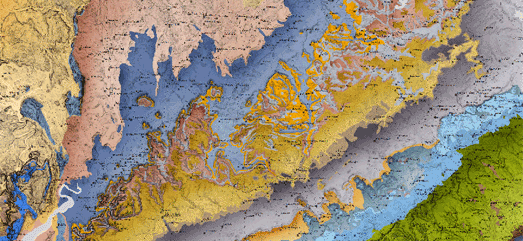Сообщения
Сообщения за январь, 2017
The Interactive Sign Languages Map
- Получить ссылку
- X
- Электронная почта
- Другие приложения
The World's Solar Atlas
- Получить ссылку
- X
- Электронная почта
- Другие приложения
Ban Trump from Britain
- Получить ссылку
- X
- Электронная почта
- Другие приложения
The World's First Geological Maps
- Получить ссылку
- X
- Электронная почта
- Другие приложения
Fun with Japanese Maps
- Получить ссылку
- X
- Электронная почта
- Другие приложения
Indoor Mapping with Mapbox GL
- Получить ссылку
- X
- Электронная почта
- Другие приложения
Two and a Half Minutes to Midnight
- Получить ссылку
- X
- Электронная почта
- Другие приложения
The Global Urban Footprint
- Получить ссылку
- X
- Электронная почта
- Другие приложения
Mapping Tall Buildings in 3D
- Получить ссылку
- X
- Электронная почта
- Другие приложения
Mapping School Ratings & Catchment Areas
- Получить ссылку
- X
- Электронная почта
- Другие приложения
The Shortest Route to Fine Dining
- Получить ссылку
- X
- Электронная почта
- Другие приложения
Discover Your Global Travel Score?
- Получить ссылку
- X
- Электронная почта
- Другие приложения
Find Your Political Antipode
- Получить ссылку
- X
- Электронная почта
- Другие приложения
Bigly Hands Make False Maps
- Получить ссылку
- X
- Электронная почта
- Другие приложения
From Constantinople to Istanbul
- Получить ссылку
- X
- Электронная почта
- Другие приложения
Make America Fat Again
- Получить ссылку
- X
- Электронная почта
- Другие приложения
The Future Price of New York Property
- Получить ссылку
- X
- Электронная почта
- Другие приложения
Map of US Lynchings
- Получить ссылку
- X
- Электронная почта
- Другие приложения
The Emoji Map
- Получить ссылку
- X
- Электронная почта
- Другие приложения
Mapping the Skyscrapers of New York
- Получить ссылку
- X
- Электронная почта
- Другие приложения
Webcams of the World
- Получить ссылку
- X
- Электронная почта
- Другие приложения
Animating Wave & Swell Forecasts
- Получить ссылку
- X
- Электронная почта
- Другие приложения
Why NATO isn't Obsolete
- Получить ссылку
- X
- Электронная почта
- Другие приложения
All the Places I've Been - President Obama
- Получить ссылку
- X
- Электронная почта
- Другие приложения
Mapping the Soviet Gulag Camps
- Получить ссылку
- X
- Электронная почта
- Другие приложения
Mapping the Spoken Word
- Получить ссылку
- X
- Электронная почта
- Другие приложения
It's Snowing!
- Получить ссылку
- X
- Электронная почта
- Другие приложения
Mapping the Museum
- Получить ссылку
- X
- Электронная почта
- Другие приложения
How Green is Your City?
- Получить ссылку
- X
- Электронная почта
- Другие приложения
Mapping the Allied Bombing of Europe
- Получить ссылку
- X
- Электронная почта
- Другие приложения
Mountains of Yellow Snow
- Получить ссылку
- X
- Электронная почта
- Другие приложения
Day Trip to Mars
- Получить ссылку
- X
- Электронная почта
- Другие приложения
Alaska's Shrinking Glaciers
- Получить ссылку
- X
- Электронная почта
- Другие приложения
Mapbox Terra
- Получить ссылку
- X
- Электронная почта
- Другие приложения
The Great British Drive Time Map
- Получить ссылку
- X
- Электронная почта
- Другие приложения
Explore the World in 3D
- Получить ссылку
- X
- Электронная почта
- Другие приложения
The Gentrification of New York City
- Получить ссылку
- X
- Электронная почта
- Другие приложения
New York's Real-Time Traffic Map
- Получить ссылку
- X
- Электронная почта
- Другие приложения





































